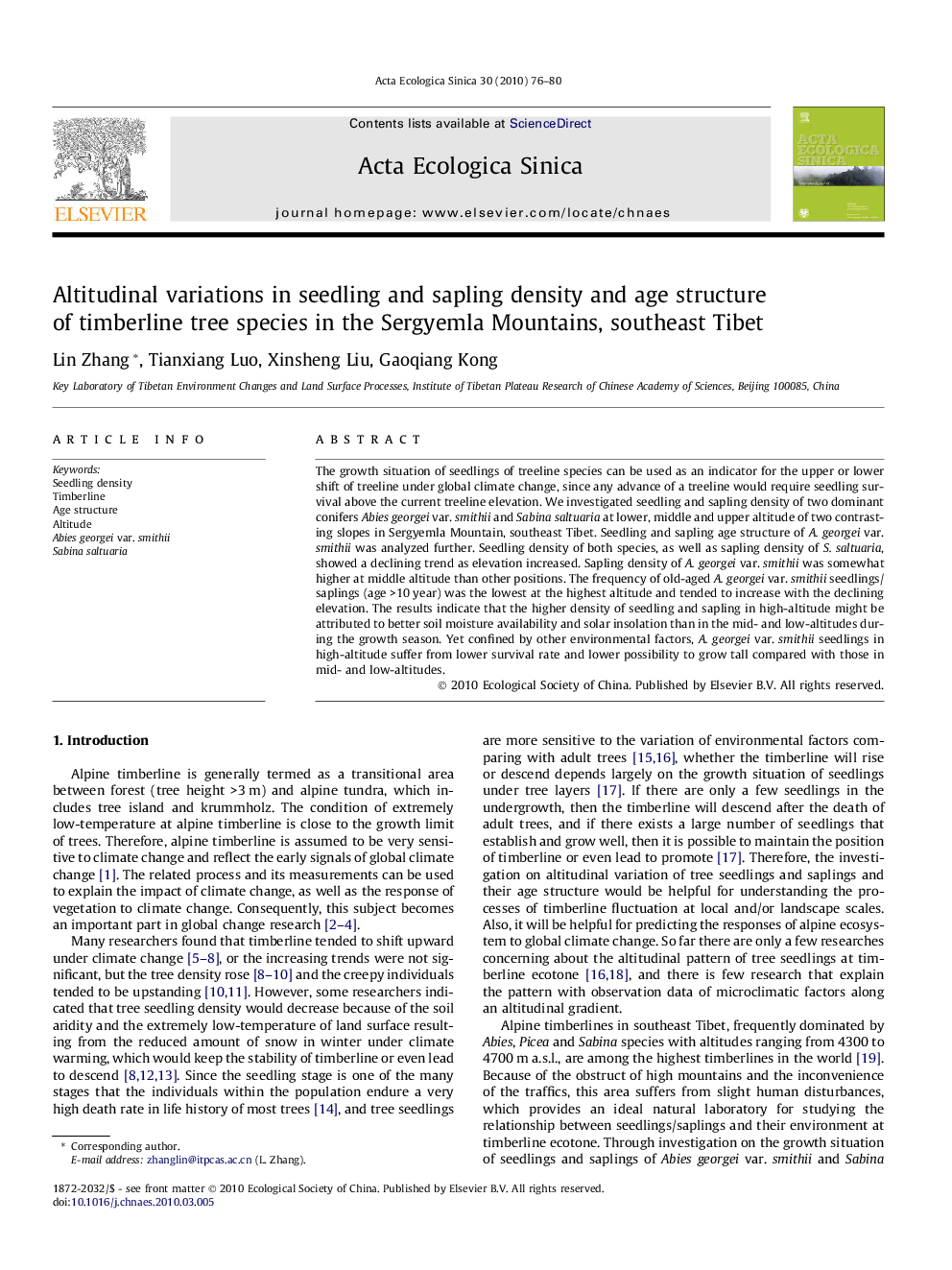| Article ID | Journal | Published Year | Pages | File Type |
|---|---|---|---|---|
| 4380252 | Acta Ecologica Sinica | 2010 | 5 Pages |
Abstract
The growth situation of seedlings of treeline species can be used as an indicator for the upper or lower shift of treeline under global climate change, since any advance of a treeline would require seedling survival above the current treeline elevation. We investigated seedling and sapling density of two dominant conifers Abies georgei var. smithii and Sabina saltuaria at lower, middle and upper altitude of two contrasting slopes in Sergyemla Mountain, southeast Tibet. Seedling and sapling age structure of A. georgei var. smithii was analyzed further. Seedling density of both species, as well as sapling density of S. saltuaria, showed a declining trend as elevation increased. Sapling density of A. georgei var. smithii was somewhat higher at middle altitude than other positions. The frequency of old-aged A. georgei var. smithii seedlings/saplings (age >10Â year) was the lowest at the highest altitude and tended to increase with the declining elevation. The results indicate that the higher density of seedling and sapling in high-altitude might be attributed to better soil moisture availability and solar insolation than in the mid- and low-altitudes during the growth season. Yet confined by other environmental factors, A. georgei var. smithii seedlings in high-altitude suffer from lower survival rate and lower possibility to grow tall compared with those in mid- and low-altitudes.
Related Topics
Life Sciences
Agricultural and Biological Sciences
Ecology, Evolution, Behavior and Systematics
Authors
Lin Zhang, Tianxiang Luo, Xinsheng Liu, Gaoqiang Kong,
